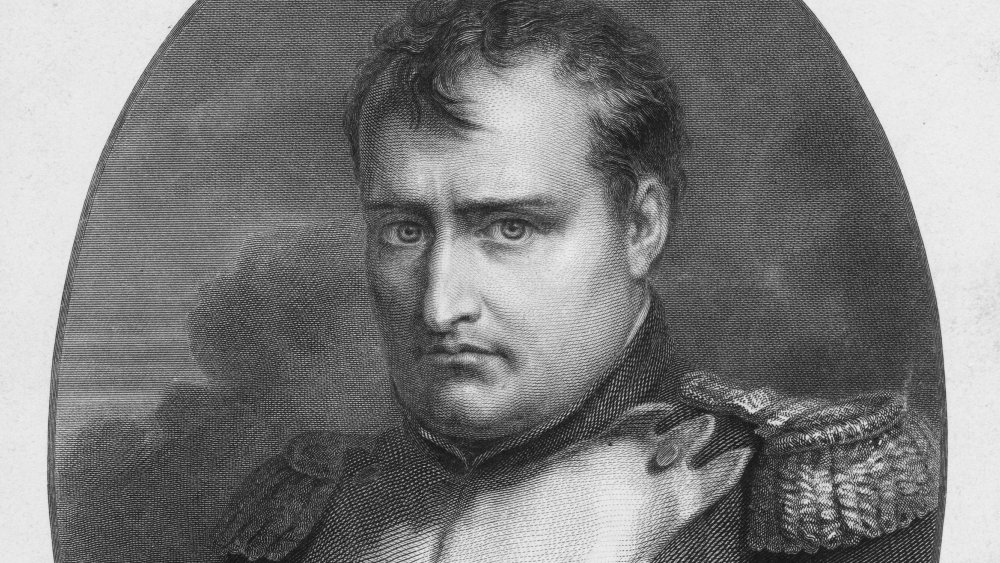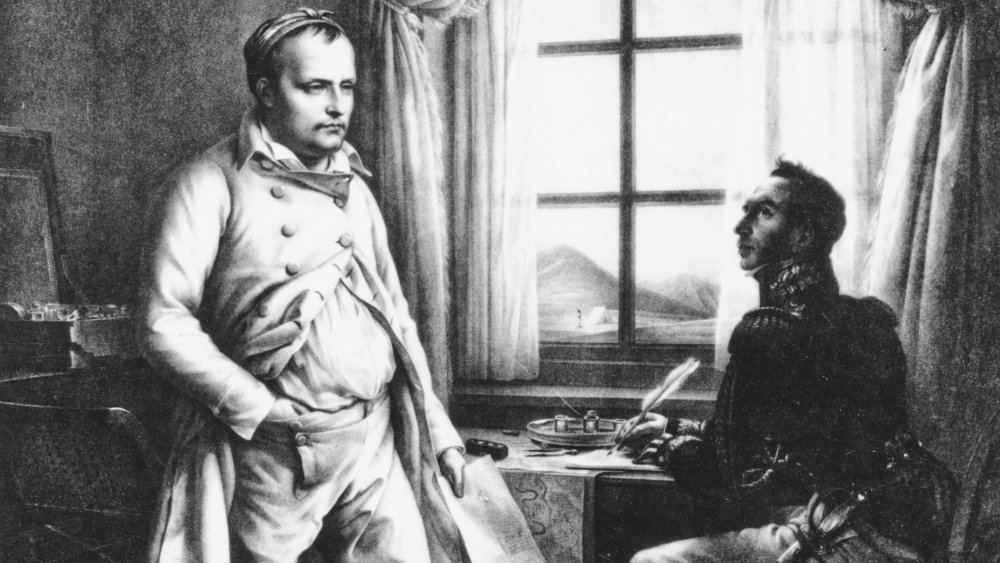What Really Killed Napoleon Bonaparte?
When French emperor turned exile Napoleon Bonaparte turned into a corpse in 1821, his doctor apparently thought it would do no harm to take an anatomical souvenir. NPR explains that doctor allegedly removed Napoleon's boner part, and gave to a priest who smuggled the "Little Corporal's" littler corporal to Corsica. After being passed down through the priest's family like a grisly heirloom, it ended up in the hands of a British collector in 1916. In 2008, Tony Perrottet, author of Napoleon's Privates: 2,500 Years of History Unzipped, likened the emperor's member to "beef jerky."
All that talk about Napoleon's man jerky raises some tough questions, like "How did people who didn't witness Napoleon's supposed deboning know whether if ever happened?" and "Even if it did, how would you prove that the stolen part wasn't switched out for someone else's at some point?" But the bigger, throbbing question is "How did Napoleon die in the first place?"
Napoleon's bones depart
Napoleon Bonapart spent most of the last six years of his life on the island of Saint Helena, per History. It was a far cry from the days when he roared to victory on the battlefield. After slaughtering his way to prominence as a general in the French Revolution, he conquered France and a vast expanse of Europe. He would die in exile and in agony. The Dartmouth Medical School writes that Napoleon succumbed to a "an acute and chronic" illness. He became "excessively pale and yellow," his feet and legs were swollen and stricken with a "scaly rash," and his hair was thinning. He eventually fell into a coma and died at 5:45 in the evening on May 5, 1821 at the age of 51.
Weeks before meeting his end, Napoleon proclaimed "I die before my time, murdered by the English oligarchy and its assassin." There may have been something to that claim because his remains showed signs of arsenic poisoning. However, the American Museum of Natural History tells the rather unnatural story of how he may have succumbed to unintentional arsenic poisoning. In the 19th century, arsenic was a common ingredient in household products. Wallpaper contained arsenic to ward off rats and was hung with an arsenic-laced paste. It was used in weed-killers and medicines. Arsenic-laden fumes from his prison wallpaper may have killed him.
An autopsy conducted a day after Napoleon's death uncovered another likely culprit: stomach cancer. Describing findings by researchers at the University of Texas Southwestern, Live Science writes that Napoleon's "stomach had two ulcerated lesions: a large one on the stomach and a smaller one that had pierced through the stomach wall and reached the liver." At that stage, even if he received modern medical treatment, he likely would have died within a year.

